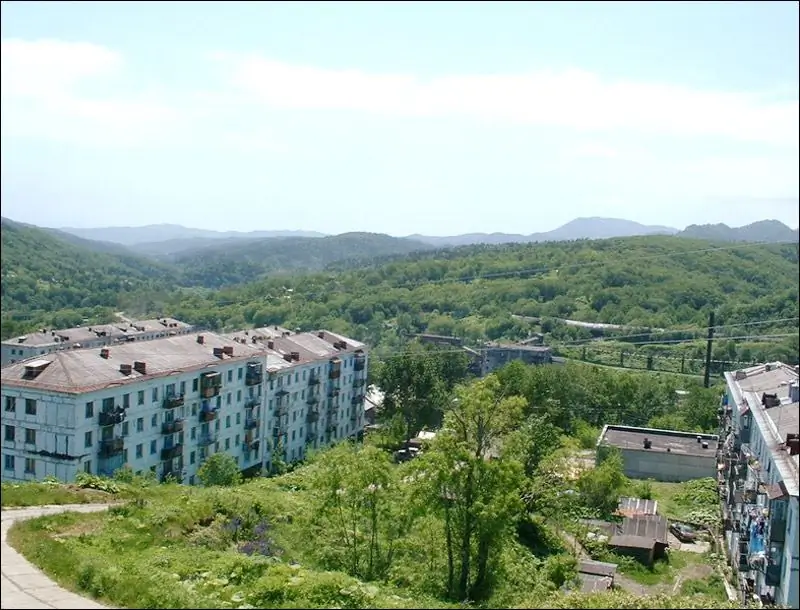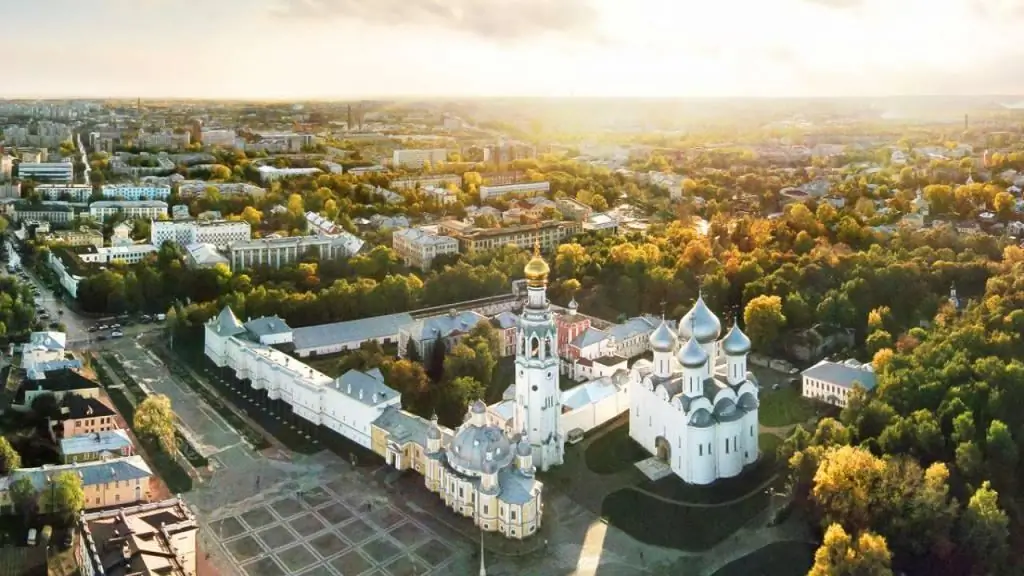- Author Harold Hamphrey [email protected].
- Public 2023-12-17 10:06.
- Last modified 2025-01-24 11:10.
The city of Paldiski (Estonia) is located 49 km west of Tallinn and 80 km by sea from Finland. The port was founded by Peter I in the distant XVIII century. Since then, many sights have remained, but the most important is the Petrovsky Fortress. Now just over 4,000 people live in the village, which is half as many as 20 years ago. This is due to the departure of the Soviet military and the closure of the naval base.
Description
Paldiski in Estonia is known as the closest major port of the country to Western and Northern Europe, which is actively used by sea carriers. It is located on the Parki peninsula, which juts out into the B altic Sea for 10 km. The city's sphere of influence also includes the two large islands of Suur and Vajake, as well as smaller islets. Previously, they were called Rooge, or Rågöarna, which is translated from Swedish as "islands where rye is cultivated." Therefore, until 1762 the bay was called Rogervik.
Since 1762the settlement became known as the B altic Port, and it was subordinate to the administration of the Estland province. The coat of arms of the city of Paldiski (Estonia) was approved on October 4, 1788 by decree No. 16716. It consisted of two forts in the sea, the imperial standard was placed on the right of them. On December 1, 1994, the coat of arms was modified: instead of the imperial standard, a lighthouse stylized as a fortress appeared. The flag consists of five horizontal stripes of blue and white.
The characteristics of the terrain are very convenient for the location of the port, which was first appreciated by the Swedes, and after Peter I. At the mouth of the bay, the depth of the sea is 45 meters, in the bay itself - up to 20 meters, the coastline is about 13 kilometers long.

Early history
Convenient geographical location, transport accessibility, short ice season attracted fishermen to the harbor. The first settlements of the Finnish people - Estonians - on the territory of Paldiski (Estonia) were founded in the X-XII centuries. At first, people built dwellings away from the sea, where pirates, Varangians and Vikings dominated - on the fortified hills of the peninsula.
At the end of the 13th century, the Swedes began to settle in the area, navigation and fishing developed. To protect a convenient bay, a small fort was built, and a dam was poured over shallow water to the island of Wayake Parks. Local residents began to settle at the edge of the sea, as a result, a regular settlement appeared.

Peter's Fortress
At the end of the 16th century, Peter I got excited about the idea of “cutting a window to Europe”, that is, getting access tothe sea. As a result, a series of wars began with the Turks for the Sea of Azov, and with the Swedes for the Gulf of Finland.
By 1714, the Russian Empire already controlled significant territories of Estland and Ingermanland. The king persistently searched for the most convenient place for the construction of the port. On July 23, 1715, he personally visited Rogervik Bay and proclaimed: “I command military ships to be built here!” On July 20, 1718, the fortress and the pier were solemnly handed over. This date is considered the founding day of Paldiski. Estonia could have become Russia's main outpost in the B altic, but for a number of reasons, Peter I decided to build the "gateway to Europe" - St. Petersburg - at the more protected mouth of the Neva.

Further development
On August 20, 1762, by decree of Catherine II, the harbor was renamed B altic. In 1770, a church school was opened, and in 1783 the settlement received the status of a city. At the beginning of the nineteenth century, the B altic port was the center of the county, where the main activities were fishing, repair and maintenance of ships. The settlement served as a place of exile for Pugachev's associates. In particular, Salavat Yulaev, the national hero of Bashkortostan, spent 20 years here.
With the construction of the B altic Railway in 1870, the city began to change. Paldiski in Estonia has become one of the most important military-commercial ports. In particular, the battleships of the Naval Corps of the B altic Fleet were stationed here. In 1876, the Paldiski Naval School was opened to train sailors, which operated until 1915. By the way, its graduate is the first admiralEstonian Johan Pitka.

Restless XX century
By the beginning of the 20th century, a third of the city's population was still employed in agriculture, the second third worked in the port. However, a new direction gradually developed - tourism. In summer, Paldiski (B altic) turned into a resort where the inhabitants of Tallinn liked to relax. By the way, here in 1912 a meeting took place between the last two Russian and German monarchs - Nicholas II and Wilhelm II.
The First World War radically changed the balance of power in the B altics. During the period of hostilities in Estonia, the B altic Fleet maneuvering base with a small garrison was located in the port of Paldiski. The city was shelled by the 10th German flotilla. In the winter of 1918, the territory was occupied by German troops. At the same time, the First Republic was formed. Estonia gained independence after repulsing all attacks by the revolutionary army of Petrograd, which sought to regain control of the region.

Soviet period
In the fall of 1939, the USSR signed an agreement with the Estonian government to rent a naval base in Paldiski. On the eve of the war, the Red Army entered the B altic States, and coastal batteries were placed on the peninsula. On August 28, 1941, the city was captured by the Germans, and liberated on September 24, 1944 during a naval landing operation.
The post-war period was a time of intense growth. Infrastructure facilities, medical facilities, housing were built, the military base was expanded. Sewage system, central water supply. The majority of the population representedmilitary personnel and their families, so army traditions were strong here. The celebration of May 9 in Estonia in Paldiski, as well as the day of the liberation of the city, was held in a particularly solemn atmosphere.
In 1962, the 93rd nuclear submarine training center with two operating reactors was built in the village - the largest of its kind. About 16,000 people served in it.
After the independence of the Republic of Estonia, the naval base was closed. The fleet left the water area on 1994-30-08, the nuclear reactors were dismantled a year later, and a concrete sarcophagus was installed over their location. Most of the servicemen left for Russia under the resettlement program with the provision of housing.

Attractions
If you look at the photo of Paldiski in Estonia, you can see that this is a small town surrounded on three sides by the sea. Only the work of the port enlivens its measured life. Interesting military facilities have remained here since Soviet times, including:
- former Pentagon training center;
- mothballed military camp in the village of Klooga;
- sarcophagi over former nuclear reactors;
- monument to the crew of the submarine "Revenge";
- lighthouse.
Other attractions include:
- Peter's Fortress;
- Petrovskaya customs;
- bust of Salavat Yulaev;
- Orthodox and Lutheran churches;
- wooden railway station;
- Vorontsov's estate;
- Adamson Studio Museum.

Among modern facilities, a sports center with a swimming pool, a library, a hobby center, and an ostrich farm stand out. Ecotourism, water sports are developed, tours are carried out in the Pakri landscape reserve.






